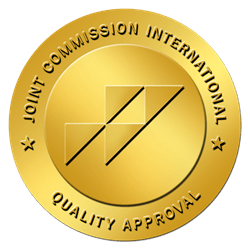Xanax (generic name alprazolam) is in a class of drugs called benzodiazepines. It is prescribed as an anti-anxiety medication prescribed to treat anxiety, anxiety disorders, panic attacks and panic disorders, depression with anxiety, insomnia, and tremors.
What is Xanax For?
Xanax is very commonly prescribed in the US; Xanax is also known to be highly addictive. Xanax is also commonly sought out by people looking to alleviate the side effects or soften the comedown of a stimulant high (such as from cocaine, meth, or Adderall). Overdose of Xanax, or overdose of Xanax combined with other drugs and alcohol is quite common. These overdoses can lead to repressed breathing, coma or death.
Benzodiazepines (benzos) are central nervous system depressants that work by increasing the levels of gamma-aminobutyric acid (GABA) in the brain. GABA is one of the brain’s neurotransmitters, which are chemical messengers. This is exactly the same mechanism as alcohol.
Xanax are commonly called; Zany, Xany, Bars, Zans, Xans, or Sticks, School Buses, and Hulks. Xanax is taken by mouth, and by nose (chopping it up and snorting it).
Xanax may interfere or interact with alcohol and a great many other commonly prescribed medications, even over the counter drugs. From birth control pills to Vodka to seizure meds, Xanax can be trouble. Mixing Xanax with drugs and/or alcohol it can be extremely dangerous, even fatal.
Side Effects of Xanax
Common side effects or signs of use of Xanax are:
Drowsiness, tiredness, dizziness, sleep problems (insomnia), memory problems, poor balance, slurred speech, trouble concentrating, irritability, diarrhea, constipation, increased sweating, headache, nausea, upset stomach, blurred vision, appetite or weight changes, edema panic disorders (swelling in your hands or feet), muscle weakness, dry mouth, stuffy nose, loss of interest in sex.
Xanax withdrawal syndrome can be a beast. The half-life of Xanax is very long and withdrawal symptoms are longer and very intense. It can include: high blood pressure, mood swings, nightmares, trouble concentrating, short-term memory loss, hallucinations, headaches, nausea, vomiting, muscle pain, tension in the jaw, numbness in the fingers and other extremities, obsessive-compulsive behaviors, irritability, loss of interest in most things, trouble interacting with others, sweating, tingling in the arms and legs, loss of appetite, weight loss, tension, confusion, depression, seizure, hand tremors, palpitations, psychotic reactions and extreme unhappiness. The most serious withdrawal symptom are seizures. These seizures can be life threatening and occur typically day 21 and after. A Benzo detox is no place for the do-it-yourselfer.
Xanax stays in the system an average of 2- 4 days, though it can vary widely between different users. It is almost always excreted from the body through urine within a week. Even though Xanax will be gone from your system within a week, withdrawal symptoms may last much longer. The worst symptoms are within day 1-4 with the main withdrawal symptoms usually lasting 10-14 days and with a return or rebound anxiety. Most withdrawal symptoms are over in 28 days but some symptoms may last even longer. Patients can develop PAWS (post-acute withdrawal syndrome).
How to Detox From Benzos
Benzodiazepine withdrawal can be intense and even dangerous (life threatening) without proper care. It’s much safer and more comfortable to manage it with an inpatient medical detox. Medications are given to ween you off Xanax and other medications are given to provide comfort and alleviate symptoms. Most importantly, anti-seizure medication is administered to avoid the most dangerous side effect of withdrawal.
There are many factors in determining the proper detox for Xanax. The patient’s age, health, mental health, the use and severity of use of other substances, along with how much Xanax is used and how, how often, how long has the patient been using Xanax. A Xanax taper or detox must be individualized per patient to be non-narcotic safe and effective.
Many users and abusers of Xanax stay in denial of their addiction for a very long time, often years or even decades. You’ll hear “I’m not addicted, I’ve been taking it for years without any problems”, “I can’t be addicted, my doctor prescribed it”, “my doctor said some people just need Xanax everyday”. Xanax is prescribed frequently to the elderly and its side effects are mistaken for Dementia or Alzheimer’s. Also, the elderly are more prone to overdose than younger people.
Many people can’t believe they will need a medical detox when they decide finally to quit taking Xanax. It’s a shock, but as anyone who has stopped taking any benzodiazepine will tell you, it’s much safer and better to do it at an inpatient medical detox. Once you’ve become significantly physically dependent on a benzodiazepine, you could require professional help to quit, and to manage the serious withdrawal syndrome that can be both physically and psychologically severe and can be life-threatening.
We recommend only detoxing off of Xanax in an inpatient detox.
Reach Out
If you or someone you know is struggling with an addiction to benzodiazepines, please call our addiction specialists for help at 877-RECOVERY. Because We Care.















